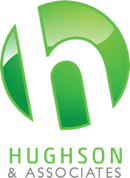If you are an owner of a residential property, you will be familiar with the Healthy Homes Standards that were introduced on 1 July 2019.
The standards set out the minimum requirements all landlords are required to comply with. Examples of the mandatory requirements include fixed heaters in the main living room, smoke alarms, ceiling and underfloor insulation and ground moisture barriers for some properties.
For older homes, the costs of bringing a residential rental up to the standard required could be substantial.
Inland Revenue (IRD) recently released QWBA 20/01, which provides guidance on the deductibility of the costs incurred to meet the Healthy Homes Standards. To summarise, the statement broadly classifies such expenditure into three categories:
- Revenue expenditure that is immediately deductible,
- Capital expenditure that forms part of the building and is therefore unable to be deducted at all because the depreciation rate for residential buildings is 0%, and
- Capital expenditure that does not form part of the building and is therefore likely to be depreciable.
The Commissioner has stated that expenditure will be capital if the work results in the reconstruction, replacement or renewal of the whole asset or substantially the whole asset, or goes over and above making good wear and tear and changes the character of the asset beyond a repair.
Conversely, expenditure that does not meet this definition will be revenue in nature and immediately deductible.
The QWBA also provides that the cost to repair items that would otherwise meet the standards if they were in an operational or reasonable condition, are likely costs of a revenue nature and hence immediately deductible.
In the QWBA, IRD commented the following capital items are likely to comprise part of the building and therefore unable to be depreciated due to buildings having a 0% rate:
- smoke alarms
- insulation
- openable windows
- exterior doors
- ducted or multi-unit heat pumps
- most extractor fans or range hoods
- ground moisture barriers
- drainage systems
- ducted or multi-unit heat pumps
- most extractor fans or range hoods
- ground moisture barriers
- drainage systems
The cost of a capital item that does not form part of the building may be either depreciated over time or deducted immediately if it meets the ‘low-value asset threshold’. For assets that fall into this narrow category it would be worth making the upgrades between now and 16 March 2021 because the threshold has been temporarily increased to $5,000 and will move to $1,000 from 17 March 2021 onwards.
Examples of such assets provided in the QWBA are:
- electric panel heaters
- single-split heat pumps
- through-window extractor fans and window stays
- door openers and stops
Unfortunately, it appears no tax relief has been introduced for residential rental owners who are required to spend considerable cash on upgrading their properties to comply with the Healthy Homes standards.
IRD’s position is reminiscent of their view on leaky home repairs, for which tax disputes are ongoing.


